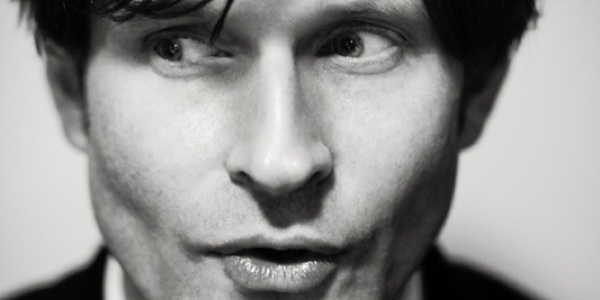Heide Museum of Modern Art has taken on an impressive retrospective of the artist, As If, covering the last 60 years of his works. The location is significant both to the organisation and to the painter himself, where he developed a great deal of his early technique in the company of Sidney Nolan and Joy Hester. But despite being a welcomed member of this artistic milieu, Heide Director Jason Smith says Whisson saw his life as an artist as a very solitary one from early on.
“I think he regarded himself as an outsider because thinking back to the ‘30s or the ‘40s, there weren’t that many artists working, not like there are today, so he felt he was a little isolated from other people. Artists who are trying to find their own voice can often feel quite isolated,” he said.
And this sense of isolation is reflected in his work. Using abstraction, heavy brushstrokes and flourishes of colour, his work has found easy company in the homes of collectors and as inspiration for other artists, but to the layman Whisson’s work remains, according to Smith, “underrated” – something that’s birthed his title as an “artist’s artist”.
“An ‘artist’s artist’ is someone that artists can see very clearly and understand very clearly what that person is trying to do,” says Smith. “And everyone says an artist’s artist is someone who inspires other artists. Ken Whisson is a painter who continues to inspire a younger generation. We’ve had a lot of young artists coming to this show.”
Though his work has never belonged to any school or movement, his pieces reflect his personal visual style and interests. From embracing figures, representations of landscapes, depictions of domestic animals and abandoned cars in the cityscape, he encapsulates his own interpretation of the human experience. “He’s interested in what it means to make a painting but he’s also interested in using his imagination to construct images of places that we might all recognise in some way.”
Across the exhibition’s impressive body of works there’s an obvious sense of evolution, notes Smith. His early expressionistic human figures become increasingly fragmented, and it provides an intriguing but logical sense of how his work has developed from these early pictures of people through to linear abstract landscapes that dominate his works now, he says
“There are different phases of his career in the exhibition, but I think if there was one thing that defined him it would be his observation of the world. He’s constantly drawing the world around him. If you looked at an early painting and you looked at a recent painting you would say that he draws with paint. He’s constantly observing and constantly drawing. And we can see this particular graphic style that emerges very clearly and distinctly across the 60 years.”
Watching on with the curious fascination and careful consideration of an introvert could be an explanation for his distinct visual language. His paintings may be political, but are not didactic – they’re gentle. “From an early age he had a sense instilled in him that we look after our fellow human beings, and we must look after the world in which we live and that included the animals that we share the planet with. So that’s why we see animals populating some of his pictures. He’s a political artist in disguise I think because his politics is subtle.
“It isn’t one painting, but it will be 20 that tries to work out how a landscape might look, or a car yard full of abandoned cars, a message of consumption, degradation of the landscape, it’s a message of failed economics, whatever. So he works in long theories to flesh out the idea and therefore it gives him a very deep understanding of where his work comes from.”
Many of the themes are reoccurring across the 60 years. “It’s always sort of intriguing to see that an artist will pursue something for such an intensely long period but that’s his life. That’s who he is,” says Jason. And perhaps the most remarkable thing about the artist is his unfailing dedication to the medium and his own internal concerns, often distinctly removed from outside influence.
He remains one of the country’s most dynamic treasures in visual arts, even though he may not be recognised for it. Though Jason prefers not to be ageist, Whisson’s works, he says, provides a certain vigour unexpected from an octogenarian. “They’re very lively paintings. They’re full of energy and life. It’s hard to distinguish between life and art. He lives to paint and he paints to live, and it’s wonderful to have an opportunity to celebrate someone who has had such a long career.”
BY BELLA ARNOTT-HOARE

